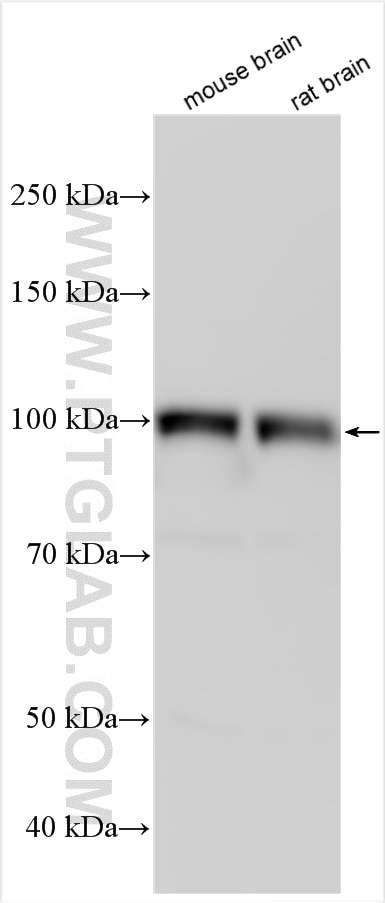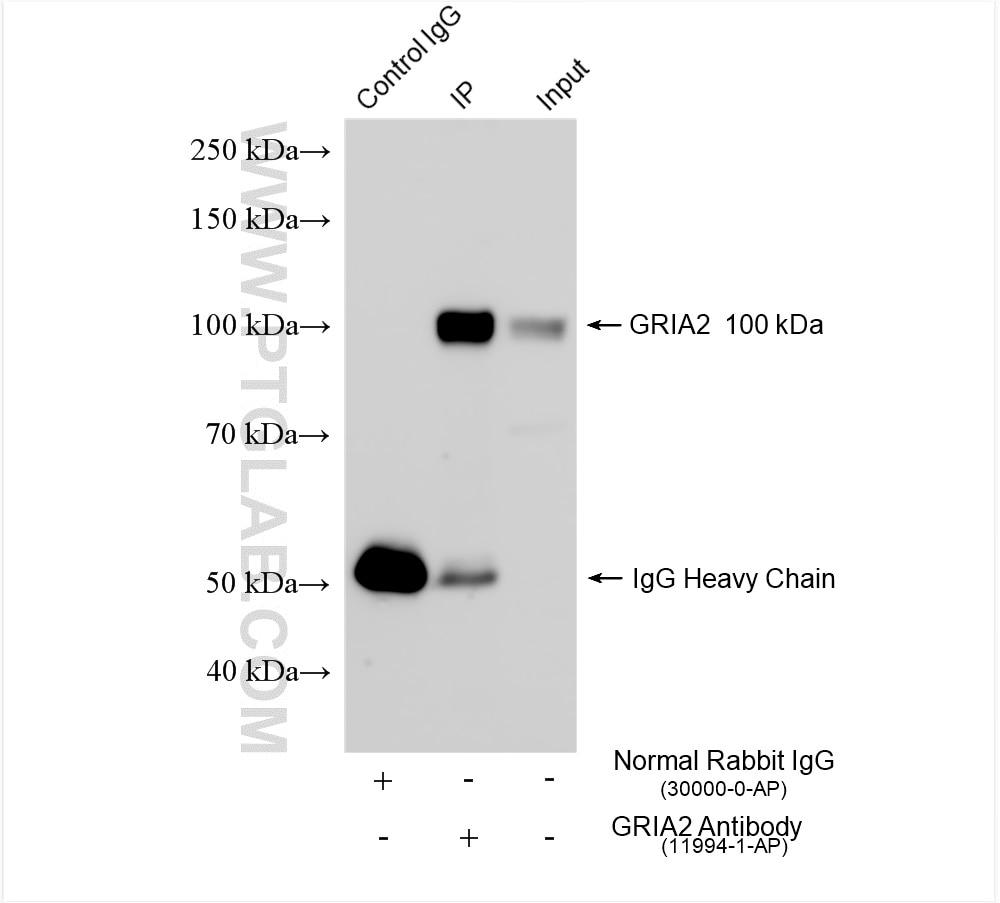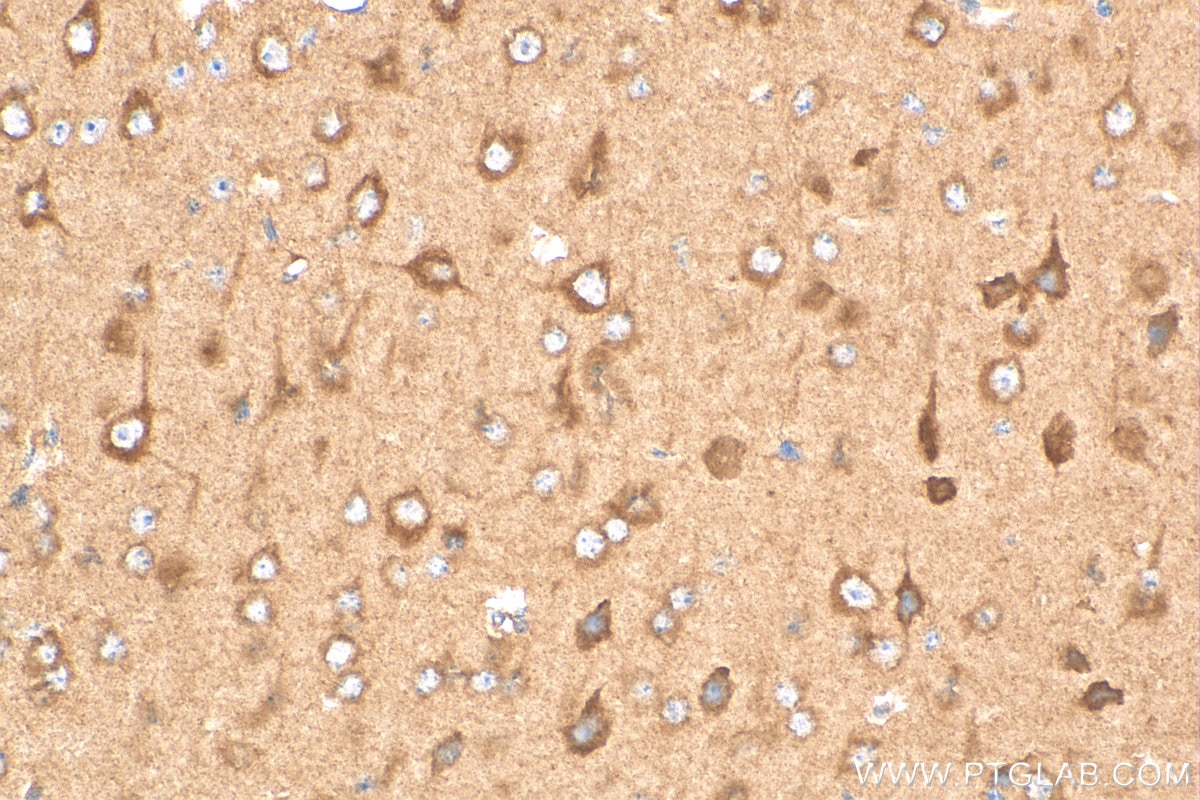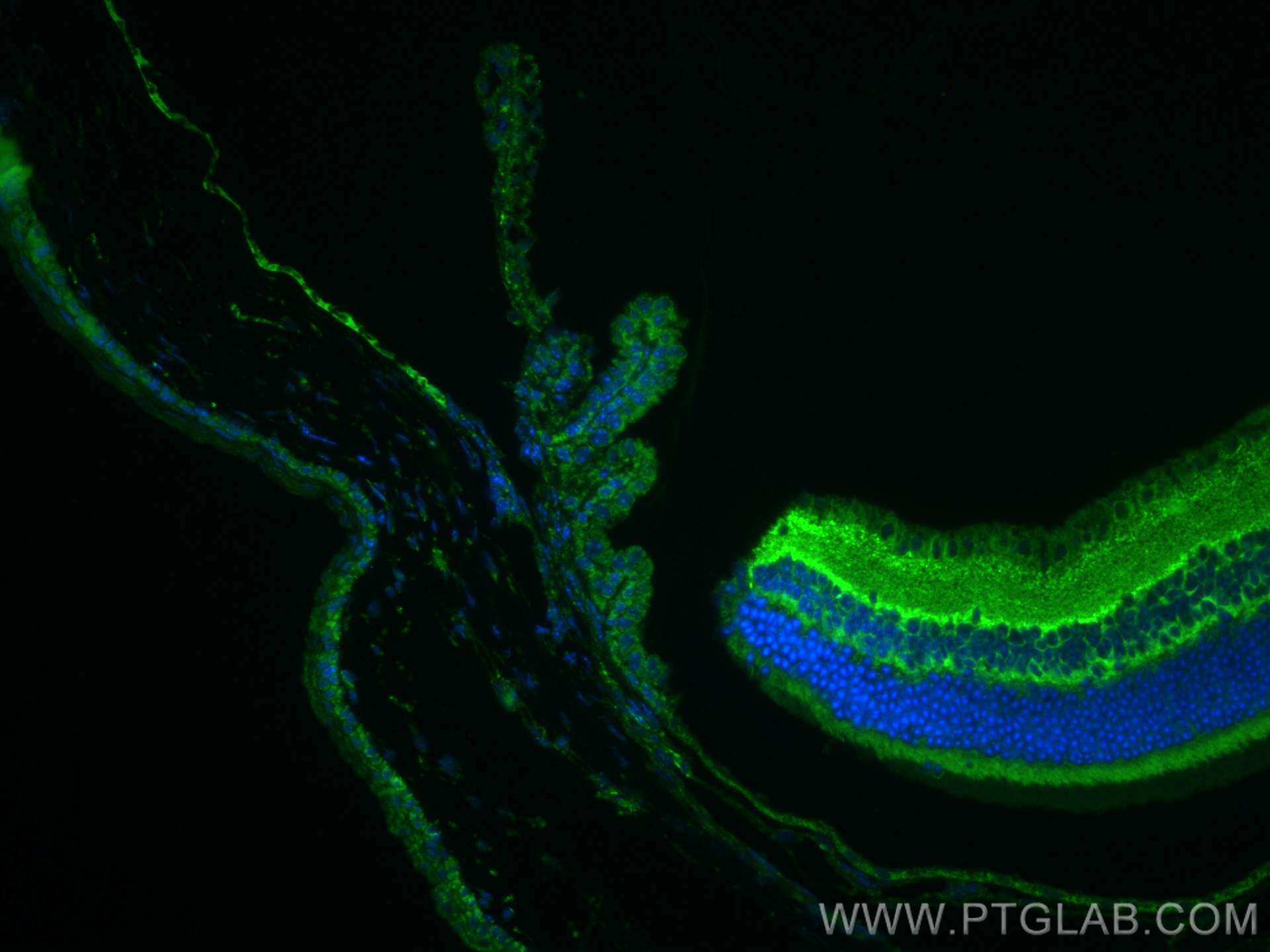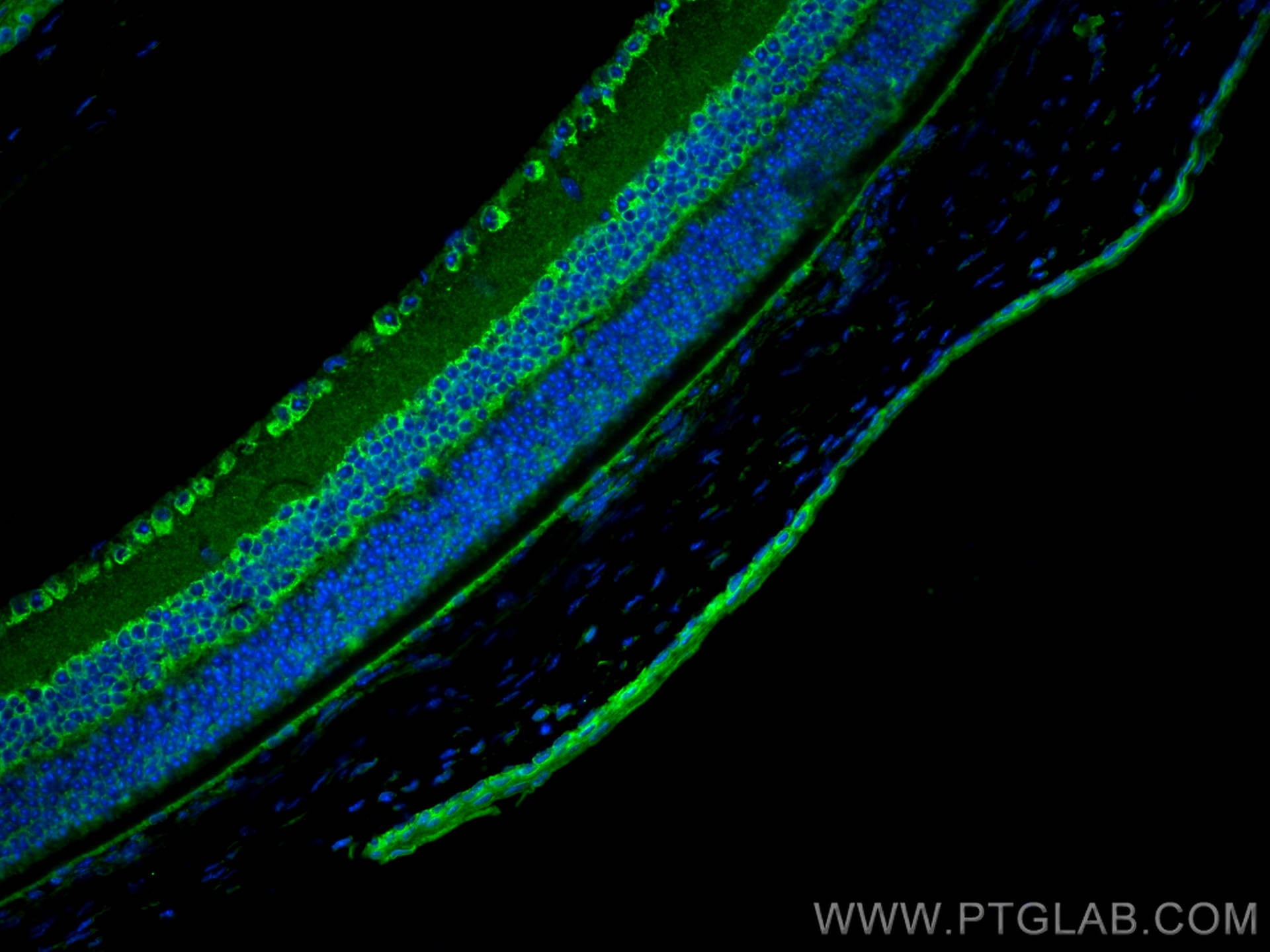Anticorps Polyclonal de lapin anti-Glutamate receptor 2
Glutamate receptor 2 Polyclonal Antibody for WB, IHC, IF-P, IP, ELISA
Hôte / Isotype
Lapin / IgG
Réactivité testée
Humain, rat, souris
Applications
WB, IHC, IF-P, IP, CoIP, ELISA
Conjugaison
Non conjugué
N° de cat : 11994-1-AP
Synonymes
Galerie de données de validation
Applications testées
| Résultats positifs en WB | tissu cérébral de souris, tissu cérébral de rat |
| Résultats positifs en IP | tissu cérébral de souris, |
| Résultats positifs en IHC | tissu cérébral de souris, il est suggéré de démasquer l'antigène avec un tampon de TE buffer pH 9.0; (*) À défaut, 'le démasquage de l'antigène peut être 'effectué avec un tampon citrate pH 6,0. |
| Résultats positifs en IF-P | tissu oculaire de souris, |
Dilution recommandée
| Application | Dilution |
|---|---|
| Western Blot (WB) | WB : 1:2000-1:12000 |
| Immunoprécipitation (IP) | IP : 0.5-4.0 ug for 1.0-3.0 mg of total protein lysate |
| Immunohistochimie (IHC) | IHC : 1:50-1:500 |
| Immunofluorescence (IF)-P | IF-P : 1:50-1:500 |
| It is recommended that this reagent should be titrated in each testing system to obtain optimal results. | |
| Sample-dependent, check data in validation data gallery | |
Applications publiées
| WB | See 42 publications below |
| IHC | See 3 publications below |
| IF | See 5 publications below |
| IP | See 1 publications below |
| CoIP | See 1 publications below |
Informations sur le produit
11994-1-AP cible Glutamate receptor 2 dans les applications de WB, IHC, IF-P, IP, CoIP, ELISA et montre une réactivité avec des échantillons Humain, rat, souris
| Réactivité | Humain, rat, souris |
| Réactivité citée | rat, Humain, souris |
| Hôte / Isotype | Lapin / IgG |
| Clonalité | Polyclonal |
| Type | Anticorps |
| Immunogène | Glutamate receptor 2 Protéine recombinante Ag2662 |
| Nom complet | glutamate receptor, ionotropic, AMPA 2 |
| Masse moléculaire calculée | 883 aa, 99 kDa |
| Poids moléculaire observé | 94-105 kDa |
| Numéro d’acquisition GenBank | BC010574 |
| Symbole du gène | GRIA2 |
| Identification du gène (NCBI) | 2891 |
| Conjugaison | Non conjugué |
| Forme | Liquide |
| Méthode de purification | Purification par affinité contre l'antigène |
| Tampon de stockage | PBS with 0.02% sodium azide and 50% glycerol |
| Conditions de stockage | Stocker à -20°C. Stable pendant un an après l'expédition. L'aliquotage n'est pas nécessaire pour le stockage à -20oC Les 20ul contiennent 0,1% de BSA. |
Informations générales
Glutamate receptors are the predominant excitatory neurotransmitter receptors in the mammalian brain and are activated in a variety of normal neurophysiologic processes. GRIA2 (glutamate receptor 2, GluR-2) belongs to a family of glutamate receptors that are sensitive to alpha-amino-3-hydroxy-5-methyl-4-isoxazole propionate (AMPA), and function as ligand-activated cation channels that mediate the fast component of excitatory postsynaptic currents in neurons of the central nervous system. These channels are assembled from 4 related subunits, GRIA1-4. The presence of GRIA2 in the heteromeric AMPA receptors impermeabilizes it to calcium, preventing possible calcium-mediated toxicity.
Protocole
| Product Specific Protocols | |
|---|---|
| WB protocol for Glutamate receptor 2 antibody 11994-1-AP | Download protocol |
| IHC protocol for Glutamate receptor 2 antibody 11994-1-AP | Download protocol |
| IF protocol for Glutamate receptor 2 antibody 11994-1-AP | Download protocol |
| IP protocol for Glutamate receptor 2 antibody 11994-1-AP | Download protocol |
| Standard Protocols | |
|---|---|
| Click here to view our Standard Protocols |
Publications
| Species | Application | Title |
|---|---|---|
Nat Biotechnol Magnify is a universal molecular anchoring strategy for expansion microscopy | ||
J Allergy Clin Immunol Six-transmembrane epithelial antigens of the prostate comprise a novel inflammatory nexus in patients with pustular skin disorders. | ||
Sci Adv RNF220 is an E3 ubiquitin ligase for AMPA receptors to regulate synaptic transmission | ||
Mol Psychiatry A recurrent SHANK1 mutation implicated in autism spectrum disorder causes autistic-like core behaviors in mice via downregulation of mGluR1-IP3R1-calcium signaling. | ||
J Clin Invest TMEM25 modulates neuronal excitability and NMDA receptor subunit NR2B degradation. |
Avis
The reviews below have been submitted by verified Proteintech customers who received an incentive for providing their feedback.
FH Lisa (Verified Customer) (10-04-2021) | The antibody signal is quite strong (50-70sec of exposure) and gives "clean" bands. The diluted antibody (TBS 0.1% Tween+5% BSA) does not work well anymore after 2-3 times of re-use
|
